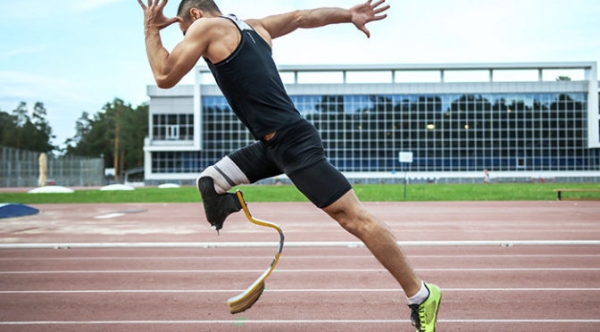Connect With Us
Blogs

Interesting Facts (2)
A trivia question: What is the best exercise for your feet? (The answer can be found at the end of this article.)
The likes of Stephen Hawking, Theodore Roosevelt, and Abraham Lincoln have all employed the feet metaphor in some of their most inspiring quotes, underscoring the literal and figurative significance of paying attention to our feet. And yet, so many of forget to do so. This is a shame, as our feet are more fascinating than most of us realize.
Fun Feet Facts
The University of California, Berkeley, has a list of facts about our feet that are worth our time knowing about – not just for the sake of curiosity, but even to better inform how we look after our feet:
- Each foot contains 26 bones (with both feet together having more than one quarter of the body’s total bones); 33 joints; and more than 100 tendons, ligaments, and muscles.
- There are more than 100,000 nerve endings in each foot, which provide sensory feedback to your brain, enabling you to automatically adjust your gait according to your environment to reduce impact forces on your body. Wearing shoes alters this feedback mechanism.
- Each foot has about 125,000 sweat glands, which combined excrete more than a cup of perspiration a day (no wonder feet sometimes don’t smell so good).
- A person who averages 8,000 to 10,000 steps a day (the minimum recommendation for overall good health) will, over a 75-year lifetime, walk the equivalent of circling the world three times.
- During high-impact activity, the forces on your feet can be equal to twice your body weight—or even more.
Additional Bonus Facts
- Toenails take longer to grow than fingernails do. It takes approximately a year and a half to grow an entire toenail. In addition, research shows that being younger, male, and/or a nail biter could all be driving factors in having a faster nail growth rate.
- Osteoarthritis is the most common type of arthritis, affecting an estimated 20.7 million adults in the United States.
- The average American walks 5,900 steps a day. The recommended daily number of steps is 10,000, which is approximately five miles.
- Cigarette smoking increases the risk of peripheral arterial disease (PAD) by several folds and is one of the most prominent risk factors. PAD is a disease in which plaque builds up in the arteries that carry blood to your head, organs, and limbs and usually affects the arteries in the legs, leading to pain and numbness in the lower extremities. In severe cases, PAD may cause infection, gangrene, and lead to leg amputation.
- When our feet are misaligned, the effects can be felt in the muscles in the rest of the body, potentially causing joint pain or even serious injuries. There are two types of foot misalignment: overpronation and excessive supination. Over 75% of the population suffers from foot misalignment.
- Ankle sprains are one of the most common injuries in sports. Because the inner ankle is more stable than the outer ankle, the foot is likely to turn inward from a fall (ankle inversion) which results in an ankle sprain.
- More than one-third of women in America have bunions, a common foot deformity in which the joint that connects the big toe to the foot gets larger and juts out.
- Both Michelangelo’s David and the Statue of Liberty have Morton’s toes. It’s is a foot condition in which the second toe is longer than the big toe. It is also called Greek foot because the ancient Greeks found it aesthetically appealing and incorporated it into paintings and sculptures.
- The feet can contract an array of nasty diseases from communal showers: Plantar warts, athlete’s foot, and ring worm are just some!
And the answer to the trivia question is walking. Walking contributes to your general well-being and improves circulation and weight control.
Remember to look after you feet. If you’re worried you may have foot health issues, get in contact with Dr. Vikki and Dr. Connie today.
If you’re fortunate enough to have all of your limbs, then chances are you take them for granted. Prosthetic limbs, such as feet, are incredibly valuable to amputees because a prosthetic can help restore some of the capabilities lost with an amputated limb. Although prosthetic limbs have still not advanced to the point where they can rival the functionality provided by biological limbs, the capabilities they do provide can be significant.
Here’s a quick look at how prosthetics work to make life easier for amputees.
How Prosthetics Work
While new materials and technologies have modernized prosthetics over the past century, the basic components of prosthetic limbs remain the same. The basic components include:
- The pylon—the internal frame of skeleton of the prosthetic. The pylon provides structural support and has traditionally been formed of metal rods. However, modern technology has allowed for lighter carbon-fiber composites to be used in place of the metal rods. The pylons are sometimes enclosed by a cover (usually made from a foam-like material). The cover can be shaped and colored to match your skin tone in order to give the prosthetic a more lifelike appearance.
- The socket—the portion of the prosthetic device that interfaces with the patient’s limb, stump, or residual limb. Since the socket transmits force from the prosthetic to the body, it must be meticulously fitted to the residual limb to ensure that it doesn’t cause irritation or damage to the skin or underlying tissues. A soft liner tends to be used in the interior of the socket, and a patient may also wear one or more prosthetic socks to achieve a snugger fit.
- The suspension system—this is what keeps the prosthetic attached to the body. The suspension mechanism can come in several forms (straps, belts, or sleeves), although the most common type of suspension mechanism relies on suction.
Even though most prosthetic limbs have these basic components in some form or another, each device is unique and designed for a specific type and level of amputation.
Choosing the Right Prosthetic Foot
Today, amputees have a wide variety of prosthetic feet to choose from, designed for walking, cycling, golfing, swimming, snow skiing, and running. Heavier wood and steel materials have been replaced by lightweight plastics, aerospace alloys, and carbon-fiber composites. But how do you choose the right one for your lifestyle?
There are a number of key factors that you should consider, including materials, comfort, function, energy storage, and multi-axial motion.
- Materials—the materials in a prosthetic foot differ by activity level. Wood, plastic, and foam are usually found in feet designed for people with low activity levels and for those who require stability. Carbon feet meet the functional needs for shock absorption and energy efficiency, and are also lightweight.
- Comfort—a prosthetic foot has to feel good for you to meet your activity goals. Comfort allows you to be more active, and the function of your prosthetic foot directly affects comfort.
- Function—prosthetic feet are designed to mimic the human foot at a specific activity level. For people who can’t walk, the function is largely cosmetic. For those who are most active, a prosthetic foot must mimic a normal foot during the act of walking. It must act as a shock absorber when your heel hits the ground, adapt to uneven terrain, provide a smooth rollover from heel to toe, and provide a rigid lever for propelling forward when you finish your step.
- Energy storage—a foot made with carbon fiber for energy storage gives you a spring in your step as the carbon fiber acts as a spring, compressing as you apply weight and propelling you forward as your foot rolls, returning energy to your step as the spring releases. Some prosthetics have one spring in the heel and a second spring in the forefoot (just what you need for walking in various speeds, running, climbing hills, or descending stairs with a secure, confident stride). With carbon fiber, the longer the spring, the more energy it can store and the more responsive the foot will be.
- Multi-axial motion—some prosthetic feet are designed to mimic the ankle, which allows the foot to move in multiple planes. Multi-axial capability in a foot allows you to raise and lower the forefoot, move the forefoot to the left and right, and roll the foot slightly to the inside or to the outside. Multi-axial motion is needed to walk comfortably and confidently on uneven ground, when your foot must adapt to whatever it encounters.
The Bionic Foot
While prosthetics are the norm for amputees at the moment, the future seems to be leading us in the direction of bionic feet. Bionic feet that can be controlled by the patient’s mind, using sensors implanted inside the muscle tissue, have been proven to work in human-testing trials.
The tiny implanted myoelectric sensors (IMES), which are surgically implanted in the residual muscle tissue about the leg, wirelessly transmit a signal to the foot, telling it to perform a specific action. While this is a breakthrough in prosthetic technology, there are still a few bugs to work out before this becomes a more mainstream option for amputees.
Schedule an Appointment
If you have any questions or concerns about foot health or need guidance in the event you’re in need of a prosthetic foot, do not hesitate to contact the caring and professional team at the Superior Foot and Ankle Care Center.


